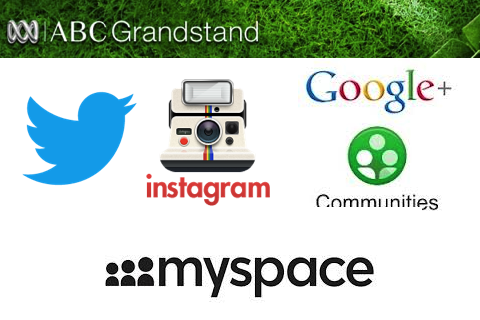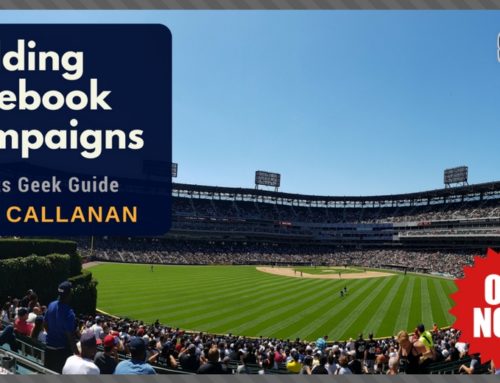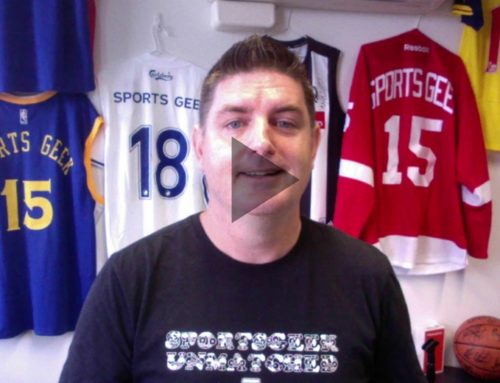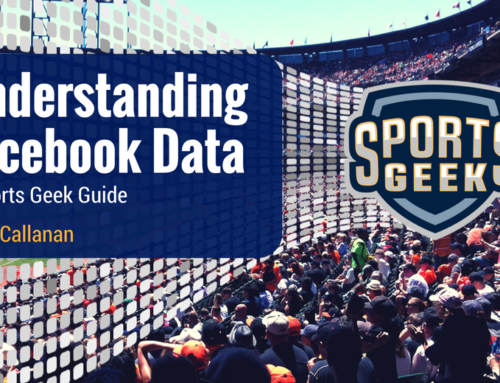Today on ABC Grandstand, Sean spoke to Francis Leach about the issues between Twitter and Instagram, Google+'s new communities and the potential revamp of MySpace.
Twitter and Instagram
There were some issues during the week of Instagram photos disappearing from Twitter timelines due to the photo-sharing app turned off all support for Twitter integration. In what's turning into a “battle for eyeballs”, the turning off of any Twitter integration availability may stem from the fact that Instagram is soon to be owned by Twitter rival, Facebook.
It could also have to do with the development of Twitter Cards, as Sean discusses.
Google+ launches Communities
Google+ is currently trying to make up ground on Facebook and Twitter by launching Google+ communities, which is similar to Facebook's groups mechanism.
The communities section lets users create and invite like-minded individuals into a private community where they can share and discuss their common interests, post photos, videos and have discussions.
MySpace Revamped
Once a large player in social media, the forgotten MySpace has undergone a revamp recently. Sean discusses the potential benefits of it's redesign and it's focus on the music industry could drive it back to the heights it once knew.
Until next week
Catch the segment live on Saturday mornings (at 7:40am) when Sean Callanan discuss sports digital with Francis Leach on ABC Grandstand. Tune into ABC Grandstand Breakfast Friday through Monday on ABC Grandstand digital radio.
Want to get these clips in podcast form? Subscribe here or Add to iTunes.
Get the Sports Geek podcasts
Want to get these clips in podcast form? Subscribe here or Add to iTunes
Podcast transcription
Francis: Grandstand Breakfast on this Saturday morning, Sean Callanan’s our friend from Sports Geek HQ to talk sport in the digital space. How are you Sean? Welcome back to the show.
Sean: I’m good thanks Francis, good to be here.
Francis: Now I use both Instagram and Twitter but I do believe that the two giants of the social media, they’re at a bit of logger heads at the moment?
Sean: Yeah they’re having a little bit of a spat, Instagram effectively shut off a little bit of access to Twitter during the week. So Twitter have been integrating what they call Twitter Cards, which automatically embeds the content in your Twitter stream. So you could be zooming along and you see an Instagram shot and click it, and you would see the Instagram shot inside both the Twitter app and on the web. But Instagram turned off that access to Twitter, so effectively now you have to click through and end up on the Instagram site. So it’s a battle for eye balls, it’s a strange decision by Instagram since Twitter is one of the main reasons for it’s large growth. A lot of the initial users were from Twitter and pretty much everyone who does Instagram does share it, but we do know now – and we’ve spoken about it – that Instagram is soon to be owned by Facebook. That deal is still in the process of going through, so Facebook and Twitter are main rivals so there is a bit of, I guess positioning. But really the only losers out of it are the actual users.
Francis: And they will just get peeved that both Instagram and Twitter to the extent that – whether it’s fair or not – that they’re not being given instant access to the material.
Sean: Yeah, and that’s all Twitter is trying to do. Twitter is trying to give access to everything, so the Twitter Card stuff works with some news articles, with media outlets, YouTube videos, those kinds of things.
Francis: Explain what that is. So say somebody posts a YouTube video on Twitter and says ‘Check this out’, you press the…?
Sean: They’re rolling out this thing called Twitter Cards so you can effectively – if you’re on your computer and you’re looking through Twitter on your stream – you can watch the video there and then.
Francis: So it doesn’t take you away to the next site?
Sean: It doesn’t take you away, which is great for the Twitter experience but there are potentially people like Instagram – and potentially YouTube might do the same – and might say ‘Actually we want our eye balls on our site, because that’s where we monetise it’. So that’s most likely where the battle lines have started to be drawn. But the cool thing about social overall, not just talking Twitter, is that persuasive nature of sharing. And if all they social networks start putting up walls around it, it will – not be the end of the world as we know it, it won’t be too drastic – but it goes against that sharing mechanism that has made social so everywhere.
Francis: And so easy to use as well and so accessible. You don’t have to jump little garden walls to get to the material and content that you want.
Sean: It’ll be interesting to see if that kind of thing… So Instagram and Twitter have had a bit of backwards and forwards. Instagram wasn’t allowed to use Twitter to find out who other people you should follow on Instagram from your Twitter followers, that was turned off a while ago. There has been a bit of backwards and forwards, but really, is there a case that potentially if they both were to work in unison – and now it is tough because they are a Facebook partner – would they both continue to grow? So watch this space.
Francis: Watch this space, indeed. Google Plus has been trying to introduce it’s own form of social media as well, and social communities online. It didn’t really take off in the way that it would have hoped.Sean: Yes, Google Plus is there and a lot of people look at it and see it and think it’s a different version of Facebook, which is sort of one way of looking at it. I think that’s mainly the problem, a lot of people went over and said ‘We’re getting what we’re getting with Facebook’. What they are trying to do is launch different products that diversify it a little bit more. Because that’s the thing, if you’re a team on Facebook and you’re a team on Google Plus, if you’re just pumping out the same content to both platforms, then there’s no differentiation there’s only ‘Why should you be there?’ Some of the things that are different for Google Plus are the hang outs and events work quite well, and once they just launched yesterday is Communities. And this is to a certain degree countering Facebook Groups, where there is a little bit of unwritten, underground power to Facebook Groups. A lot of teenage kids will be in Facebook Groups with all their mates, and that’s where they’re having their conversations in a private manner, so their parents – who are on Facebook as well – don’t see it. So Communities sort of offers that in that you can set up interest groups and effectively have a forum slash conversation about that, rather than having it on a stream.
It will be interesting to see how… I opened it up yesterday so there’s a flurry of community invites as people set them up. I set one up for Sports Digital and invited all the people who were in my circle of Sports Digital, and it’s the most activity I’ve seen on Google Plus for six months. So I did think it was funny, I think Will Anderson described Google Plus as a ‘Witness relocation program’ because at the moment there just aren’t the people there for it…Francis: It requires critical mass for it to work.
Sean: And that’s what all the networks are looking at. If we look at Facebook, Twitter, Google Plus, all of them need the mainstream people. So if you were a financialist the ‘mums and dads’, or the mainstream audience. But the mainstream audience needs a reason to go there, so you need these killer content producers. That’s why Twitter loves the sports market because fans love their sports and love their athletes, so you’re looking at athletes, celebrities, music artists and the like. Wherever they start gravitating towards, that’s where the people will be. At the moment that hotter space is Twitter, that’s where a lot of athletes and celebs and that are getting traction and getting benefit. But that’s where the battle between the networks is, to get those big guys.
Francis: It’s that splintering isn’t it? If there isn’t a critical mass of users where you can have a conversation that is wide ranging with a lot of people, and it starts to splinter off into a whole bunch of little groups, it defeats the purpose of it and dilutes the whole power of the platforms.Sean: Yeah, definitely. And another one that hasn’t gone away but it’s gone through a bit of a re-brand is MySpace.
Francis: That’s like the flares of social media, isn’t it? It went out of fashion and it’s back!
Sean: It is, it’s had a bit of a revamp and it’s definitely sticking to it’s music roots.
Francis: It’s found a niche for itself, hasn’t it, as a music portal. So if you see a band like we just played Django Django – a Scottish band that I like the sound of – they’ll probably have a MySpace where you can listen to their material, their bio will be on there and you can probably even download some of their songs as well.
Sean: Yeah, I think they’re definitely starting from that base of ‘Let’s get the artists’, because the artists were always big MySpace fans and that’s where it generated from. I think the fact that Justin Timberlake, Lady Gaga, Pink, and Jay-Z – all the big names – have been drawn back into MySpace, doesn’t mean that everyone will go back. But potentially, if they’re finding that they’re getting better cut-through and better interaction with their fans on MySpace – and we’ve spoken before about Mark Cuban and the Edge Rank and people not being able to make connections with Facebook – we might see the music scene grow in that space. What I try to do at Sports Geek is say well ‘How can sports learn from music? Can sports use that space? Does it make sense, and is it a way for them to connect?’ Again, I think MySpace will be a little bit of ‘Watch this space’, see how music works for it and see if there is a demand. If there are people there then potentially there’s an opportunity for sports to jump into that space.
Francis: It’s always the trend leaders that will provide the opportunity and maybe show the way with an example on how to get the best of the space. Good on you, Sean. We can find you at Sports Geek HQ?
Sean: SportsGeekHQ.com or ‘@SportsGeek’ on Twitter or ‘@SeanCallanan’.





